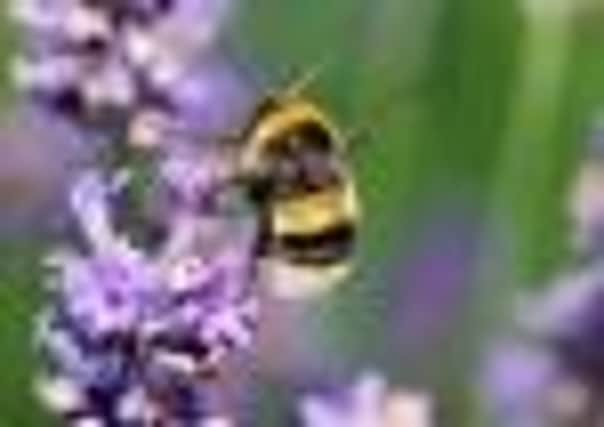Outdoors: The humble bumblebee


Watching bumblebees buzzing around colourful clumps of flowers in the garden on a warm and sunny day is always enjoyable. Their furry rotund bodies and continual endeavours in search of nectar secure their place among our most endearing and compelling insects.
They also have fascinating social lives and play a crucial role in the overall health of our environment because they are prolific pollinators. Indeed, according to Anthony McCluskey of the Bumblebee Conservation Trust, it is perhaps all too easy to underestimate the valuable ecological role played by bumblebees and this is why it is so important that strenuous efforts are focused on their conservation.
Advertisement
Hide AdThere is still much to learn about the natural history of bumblebees but what we do know is that all is not well with our populations and already two species in the UK have become extinct in the last 70 years and others have declined dramatically. Bumblebees are among the flagship creatures of our countryside and are also important from an economic standpoint, with their pollinating activities vital to agriculture and food production. In other words, should our bumblebees disappear, the whole ecosystem starts to collapse with potentially dire consequences.
“The main reasons for bumblebee declines are habitat loss and agricultural intensification, and this is why the focus of so much of our conservation work has been on trying to protect and restore flower-rich landscapes,” McCluskey explains. “In order for bumblebees to thrive we need more patches of wildflowers in field corners, margins, gardens, waste ground and roadside verges.”
There are 19 species in Scotland but in most areas only six are at all common and widespread – the white-tailed, buff-tailed, early, garden, common carder, and red-tailed bumblebees. All are attractive, but the red-tailed bumblebee is particularly so because of the striking contrast between the red on the tip of the abdomen and the shiny blackness of the rest of the body. Another gem is the common carder bee, so named because it knits grass and moss together to make its nest on the ground.
Most bumblebees have a similar social system to honey bees that incorporates workers, drones and a queen. However, instead of the many thousands of individuals found in a typical honey bee hive, bumblebee colonies usually only comprise a few hundred individuals at most. Another key difference is that each colony exists for less than a year and dies out in autumn, with only the young mated queens surviving over the winter in readiness for starting a new colony the following spring, which is often sited underground in a mouse or other hole. A particularly interesting and related group are the cuckoo bumblebees, which like their avian namesakes are social parasites that lay their eggs in the nests of true bumblebees.
The Bumblebee Conservation Trust is keen to see more farmers and landowners doing positive things by managing their land sympathetically for bees. Simple steps can make a big difference, particularly the timing of cutting and grazing of fields in order for plants to flower and produce seed. In the north of Scotland and the Western Isles, for example, the Trust is endeavouring to save one of our rarest species, the great yellow bumblebee, by working with farmers and crofters to raise awareness of its habitat requirements and the types of flowers that will help it survive.
While populations of most bumblebee species have been declining, we can make a big difference by having plants in gardens that bumblebees can use for food. McCluskey says careful planning for a succession of bee-friendly flowers can bring real benefits. “It is important to have suitable flowers from the start of bumblebee active season right until the end,” he says. “For spring, the best are heather, mahonia and lungwort. In early summer, allium, thyme and meadow’s cranesbill are all good, while in late summer lavender, aquilegia, campanula, borage and scabious are attractive.
Advertisement
Hide Ad“Bumblebees are essential parts of our ecosystems, as well as being great pollinators that help us produce a huge variety of food. The good news is that it is easy for gardeners to help bees by making a few changes that should see their gardens buzzing throughout summer.”
www.bumblebeeconservation.org